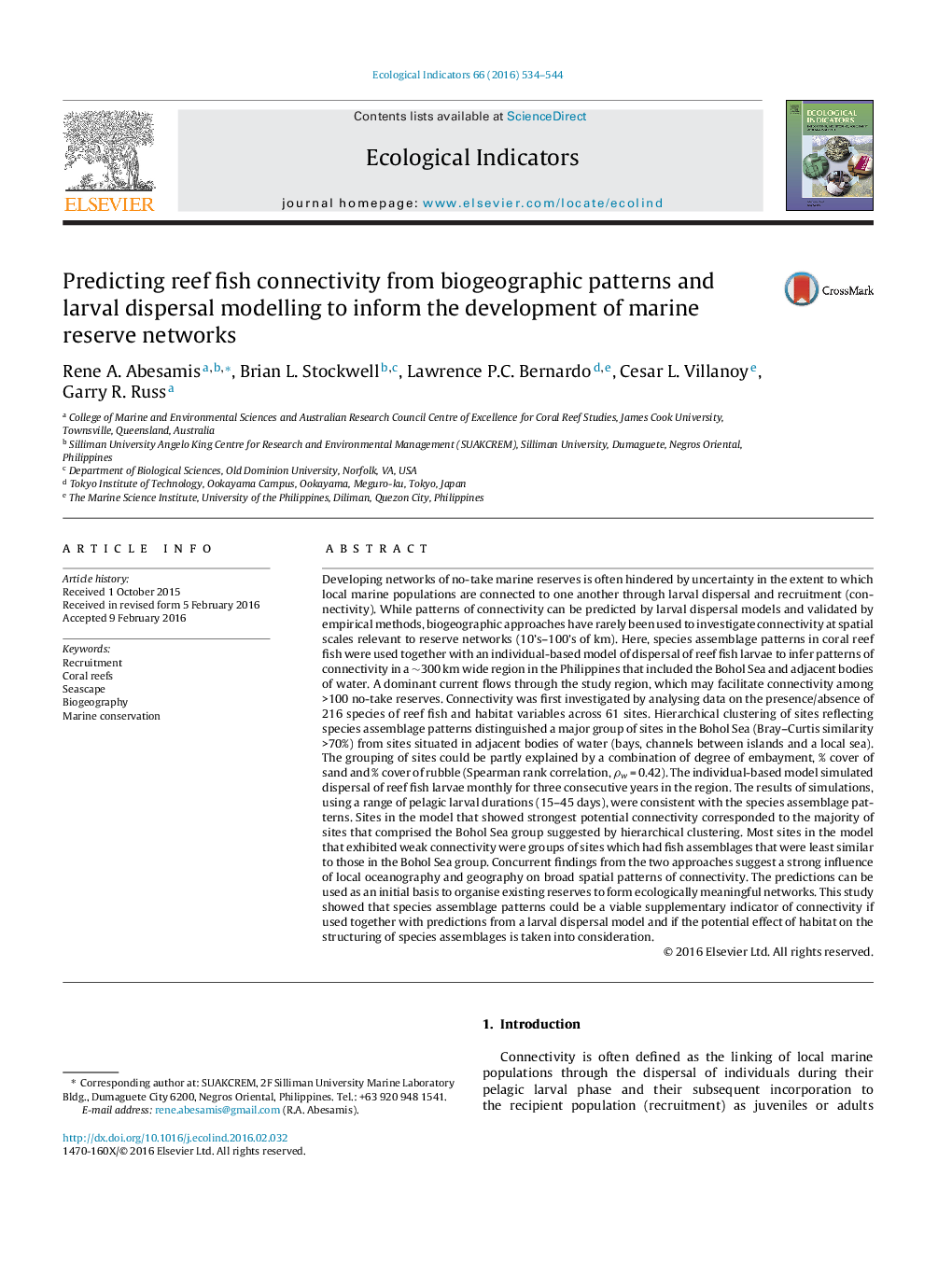| Article ID | Journal | Published Year | Pages | File Type |
|---|---|---|---|---|
| 6293533 | Ecological Indicators | 2016 | 11 Pages |
Abstract
Developing networks of no-take marine reserves is often hindered by uncertainty in the extent to which local marine populations are connected to one another through larval dispersal and recruitment (connectivity). While patterns of connectivity can be predicted by larval dispersal models and validated by empirical methods, biogeographic approaches have rarely been used to investigate connectivity at spatial scales relevant to reserve networks (10's-100's of km). Here, species assemblage patterns in coral reef fish were used together with an individual-based model of dispersal of reef fish larvae to infer patterns of connectivity in a â¼300 km wide region in the Philippines that included the Bohol Sea and adjacent bodies of water. A dominant current flows through the study region, which may facilitate connectivity among >100 no-take reserves. Connectivity was first investigated by analysing data on the presence/absence of 216 species of reef fish and habitat variables across 61 sites. Hierarchical clustering of sites reflecting species assemblage patterns distinguished a major group of sites in the Bohol Sea (Bray-Curtis similarity >70%) from sites situated in adjacent bodies of water (bays, channels between islands and a local sea). The grouping of sites could be partly explained by a combination of degree of embayment, % cover of sand and % cover of rubble (Spearman rank correlation, Ïw = 0.42). The individual-based model simulated dispersal of reef fish larvae monthly for three consecutive years in the region. The results of simulations, using a range of pelagic larval durations (15-45 days), were consistent with the species assemblage patterns. Sites in the model that showed strongest potential connectivity corresponded to the majority of sites that comprised the Bohol Sea group suggested by hierarchical clustering. Most sites in the model that exhibited weak connectivity were groups of sites which had fish assemblages that were least similar to those in the Bohol Sea group. Concurrent findings from the two approaches suggest a strong influence of local oceanography and geography on broad spatial patterns of connectivity. The predictions can be used as an initial basis to organise existing reserves to form ecologically meaningful networks. This study showed that species assemblage patterns could be a viable supplementary indicator of connectivity if used together with predictions from a larval dispersal model and if the potential effect of habitat on the structuring of species assemblages is taken into consideration.
Related Topics
Life Sciences
Agricultural and Biological Sciences
Ecology, Evolution, Behavior and Systematics
Authors
Rene A. Abesamis, Brian L. Stockwell, Lawrence P.C. Bernardo, Cesar L. Villanoy, Garry R. Russ,
